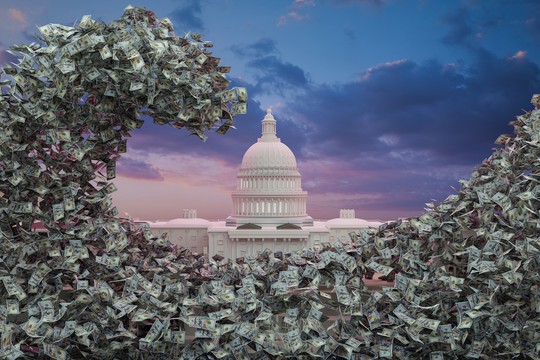Getty Images
The Biden Administration remains locked in a standoff with congressional Republicans over raising the federal debt ceiling, just two weeks before the nation is set to default on its obligations for the first time. The U.S. government hit its congressionally imposed $31.4 trillion borrowing limit in January, and Treasury Secretary Janet Yellen has warned that the country could run out of cash as early as June 1 if Democratic President Joe Biden and Republican House Speaker Kevin McCarthy are unable to reach a deal to raise the debt ceiling, writes “Time”.
But while a default would be unprecedented, according to most experts, this isn’t the first time Washington has been down this road.
Since the 1950s, both political parties have engaged in legislative battles over the debt ceiling — each using it to paint the other as financially irresponsible — only to reach an agreement before markets began to panic.
In the last two decades, the U.S. has added $25 trillion in debt, spending nearly $1 trillion more than it receives in taxes and other revenue every year since 2001—in large part due to financing wars, tax cuts, emergency responses, and expanded federal spending. To make up the difference, the government has to borrow money to continue to finance payments that Congress has already authorized.
Now that the U.S. has hit its limit, unless Congress raises or suspends the debt limit, the federal government will lack the cash to pay all its obligations.
Since 1960, Congress has raised, extended, or revised the debt limit 78 separate times, of which 49 were under Republican presidents and 29 were under Democratic presidents, according to the Department of Treasury. In each of those instances, Congress took action on the debt limit before the nation defaulted.
But in recent years, raising the cap has become an increasingly political issue, particularly when power in Washington is divided. Since the debt ceiling is one of the few must-pass bills, both parties have tried to use the vote as an opportunity to take a political stand and exact concessions, blaming the other side for its profligacy.
Gary Richardson, an economist and historian of the Federal Reserve system at the University of California-Irvine, said that by the same logic, one could argue that any time the Federal Reserve expands the money supply — as it has done repeatedly over the years — it reduces the value of existing money and thus shrinks the real value of payments promised to debt holders.
That is what we are seeing play out this year. House Republicans are demanding steep spending cuts and a rollback of some of President Joe Biden’s legislative accomplishments in exchange for their votes to raise the debt ceiling. Meanwhile, Biden and Senate Democrats have insisted that they will not negotiate over the debt limit, calling on Congress to pass a clean increase without any strings attached.
The White House has also claimed that the U.S. faces a first-ever default if Congress is unable to raise the debt limit.
But Alex Pollock, a former Treasury Department official, argued in a 2021 op-ed in ‘The Hill’ that there are four precedents for U.S. defaults:
1) During the Civil War in 1862, when the U.S. printed paper money after the Union’s reserves of gold and silver coin were depleted;
2) during the Great Depression in 1933, when the government refused to repay bondholders with gold, as agreed to when the securities were sold;
3) in 1968, when the U.S. did not honor silver certificates with an exchange of silver dollars;
4) in 1971, when the government abandoned the Bretton Woods Agreement, which included a commitment to redeem dollars held by foreign governments for gold.
A debt limit breach could lead to a decline in real GDP, nearly 2 million lost jobs, and an increase in the unemployment rate, per a recent report from Moody’s Analytics.
read more in our Telegram-channel https://t.me/The_International_Affairs

 11:30 25.05.2023 •
11:30 25.05.2023 •























